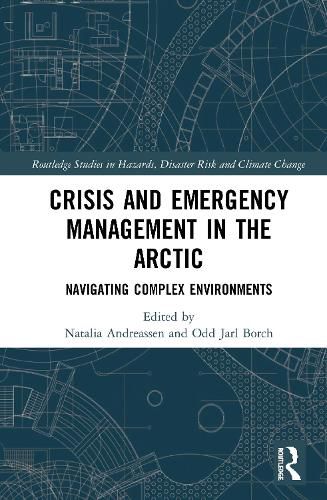Readings Newsletter
Become a Readings Member to make your shopping experience even easier.
Sign in or sign up for free!
You’re not far away from qualifying for FREE standard shipping within Australia
You’ve qualified for FREE standard shipping within Australia
The cart is loading…






This book sheds light on the management challenges of crisis and emergency response in an arctic environment.
It explores how the complexity of the operational environment impacts on the risk of operations and addresses a need for tailor-made emergency response mechanisms. Through case studies of the arctic environment, the book illustrates how factors such as nature, geography, demographics and infrastructure increase the complexity of crises in the Arctic and present a significant danger to life and health, the environment and values in challenging Arctic waters. The case studies lay a special focus on contextual factors including conflicting interests and different stakeholder groups, as well as the institutional platforms influencing crisis response and emergency management. They also explore the implications for the managerial roles, the mode of operations, and the structuring of the organizations responsible for the emergency response. The necessity to facilitate cooperation across organizations and borders and a need for organizational flexibility in large scale operations are also emphasized.
Written in an accessible style, this book will make for a useful resource for undergraduate and postgraduate students of disaster and emergency management, as well as for professionals involved in emergency services.
$9.00 standard shipping within Australia
FREE standard shipping within Australia for orders over $100.00
Express & International shipping calculated at checkout
This book sheds light on the management challenges of crisis and emergency response in an arctic environment.
It explores how the complexity of the operational environment impacts on the risk of operations and addresses a need for tailor-made emergency response mechanisms. Through case studies of the arctic environment, the book illustrates how factors such as nature, geography, demographics and infrastructure increase the complexity of crises in the Arctic and present a significant danger to life and health, the environment and values in challenging Arctic waters. The case studies lay a special focus on contextual factors including conflicting interests and different stakeholder groups, as well as the institutional platforms influencing crisis response and emergency management. They also explore the implications for the managerial roles, the mode of operations, and the structuring of the organizations responsible for the emergency response. The necessity to facilitate cooperation across organizations and borders and a need for organizational flexibility in large scale operations are also emphasized.
Written in an accessible style, this book will make for a useful resource for undergraduate and postgraduate students of disaster and emergency management, as well as for professionals involved in emergency services.